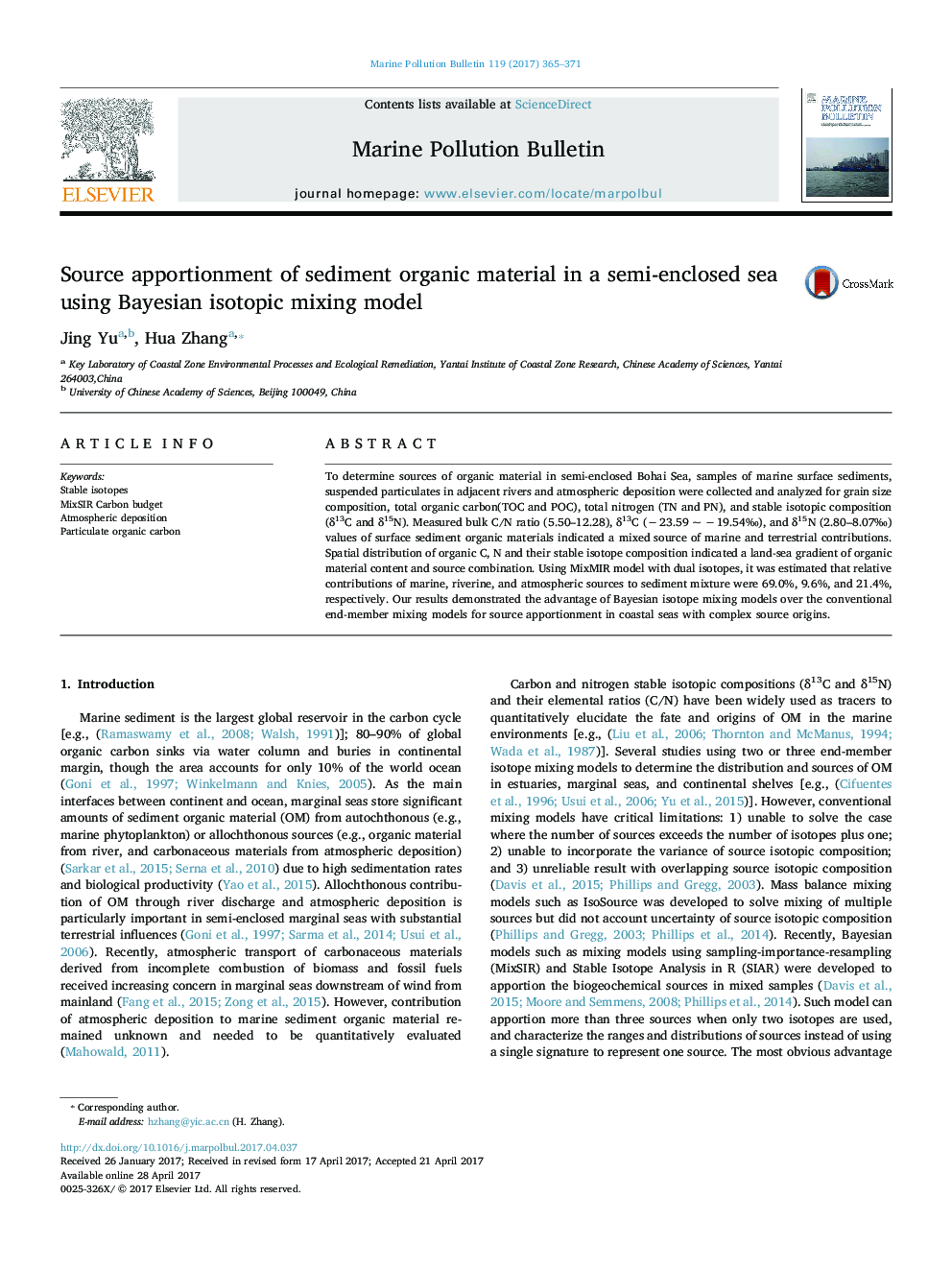| Article ID | Journal | Published Year | Pages | File Type |
|---|---|---|---|---|
| 5757964 | Marine Pollution Bulletin | 2017 | 7 Pages |
â¢Isotopic composition (d13C, d15N) of marine sediments, river particulates and atmospheric deposition were analyzedâ¢Bayesian isotope mixing model with dual isotopes provided robust source apportionment with uncertainty measurementsâ¢Marine, riverine, and atmospheric contributions to sediment OM of the Bohai Sea were 69.0%, 9.6%, and 21.4%, respectively
To determine sources of organic material in semi-enclosed Bohai Sea, samples of marine surface sediments, suspended particulates in adjacent rivers and atmospheric deposition were collected and analyzed for grain size composition, total organic carbon(TOC and POC), total nitrogen (TN and PN), and stable isotopic composition (δ13C and δ15N). Measured bulk C/N ratio (5.50-12.28), δ13C (â 23.59 ~ â 19.54â°), and δ15N (2.80-8.07â°) values of surface sediment organic materials indicated a mixed source of marine and terrestrial contributions. Spatial distribution of organic C, N and their stable isotope composition indicated a land-sea gradient of organic material content and source combination. Using MixMIR model with dual isotopes, it was estimated that relative contributions of marine, riverine, and atmospheric sources to sediment mixture were 69.0%, 9.6%, and 21.4%, respectively. Our results demonstrated the advantage of Bayesian isotope mixing models over the conventional end-member mixing models for source apportionment in coastal seas with complex source origins.
